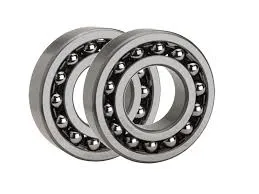
Dec . 07, 2024 08:03 Back to list
agricultural equipment bearings
Understanding Agricultural Equipment Bearings Essential Components for Optimized Performance
Agriculture has long been the backbone of economies worldwide, and the efficiency of agricultural equipment plays a critical role in maximizing productivity. At the heart of many agricultural machines, from tractors to harvesters, are bearings. These seemingly simple components are vital to the smooth, efficient, and reliable operation of agricultural machinery. Understanding the role and significance of agricultural equipment bearings can greatly enhance equipment performance and longevity.
The Role of Bearings in Agricultural Equipment
Bearings are mechanical components that facilitate rotational or linear motion while minimizing friction between moving parts. In agricultural machinery, they support the shafts and reduce friction in various components, such as engines, gearboxes, and cutting blades. Without bearings, these machines would suffer from excessive wear and tear, leading to frequent breakdowns and costly repairs.
The primary functions of bearings in agricultural equipment include
1. Load Support Bearings are designed to carry loads, allowing for weight distribution across the machine. This capability is especially crucial in heavy equipment, where the stress on components is immense.
2. Friction Reduction Bearings reduce the friction between rotating parts, improving efficiency and extending the lifespan of machinery. By minimizing heat generation caused by friction, bearings help maintain optimal operating temperatures.
3. Alignment and Stability Properly functioning bearings ensure that components are correctly aligned, which is essential for balanced operation. Misalignment can lead to increased wear and lead to premature equipment failure.
Types of Bearings Used in Agricultural Equipment
Various types of bearings are used in agricultural machinery, each serving specific purposes based on design and application
1. Ball Bearings These are among the most commonly used bearings, consisting of small balls that fit between races. Ball bearings handle both radial and axial loads and are ideal for high-speed applications, making them suitable for many agricultural tools.
2. Roller Bearings Roller bearings utilize cylindrical rolling elements and are adept at handling heavy radial loads. They are often found in tractor wheel hubs and heavy-duty applications where weight support is crucial.
3. Thrust Bearings Designed to handle axial loads, thrust bearings are typically used in applications where the load is applied parallel to the axis of the shaft, such as in gearboxes and column lifts.
4. Plain Bearings Also known as bushings, plain bearings provide low-friction support for rotating parts without traditional rolling elements. They are often utilized in less demanding applications and are cost-effective.
agricultural equipment bearings

Benefits of Quality Bearings in Agricultural Equipment
Investing in high-quality bearings for agricultural equipment offers numerous advantages
1. Improved Performance Quality bearings ensure smoother operation of machinery, leading to enhanced productivity. This is particularly important during peak seasons when downtime can result in financial losses.
2. Extended Equipment Life Properly selected and maintained bearings minimize wear on other mechanical components, contributing to the overall longevity of the equipment.
3. Cost Savings While high-quality bearings may have a higher initial cost, they can significantly reduce maintenance and replacement expenses over time.
4. Reduced Downtime Reliable bearings lead to fewer equipment failures, which means less time spent on repairs and more time focused on productive farming activities.
Maintenance Tips for Agricultural Bearings
To maximize the longevity and efficiency of bearings in agricultural equipment, routine maintenance is crucial. Here are some best practices
1. Regular Inspections Periodically check bearings for wear, signs of damage, or abnormal noise. Early detection of issues can prevent more severe damage down the line.
2. Lubrication Ensure bearings are adequately lubricated to reduce friction and wear. The type and frequency of lubrication depend on the operating conditions and the bearing design.
3. Proper Alignment Maintain proper alignment of all components to prevent premature bearing failure due to misalignment.
4. Environmental Considerations Keep bearings free from dust, dirt, and moisture, which can contaminate lubrication and cause wear.
Conclusion
Bearings are indispensable components of agricultural equipment, significantly affecting performance, efficiency, and durability. By understanding the types of bearings and their functions, farmers and equipment operators can make informed decisions regarding maintenance, selection, and operation of agricultural machinery. Investing in quality bearings and adhering to maintenance routines will ultimately enhance productivity and contribute to the success of agricultural operations.
Latest news
-
Premium Deep Groove Ball Bearings | High Speed & Reliability
NewsAug.29,2025
-
Durable Scaffolding Clamps - Secure & Reliable Tube Connectors
NewsAug.28,2025
-
Common Failures in Thrust Ball Bearings and Solutions
NewsAug.22,2025
-
How Tapered Roller Bearings Can Take Shock Loads
NewsAug.22,2025
-
Angular Bearings in High-Precision Spindles
NewsAug.22,2025
-
The Impact of Misalignment on Cylindrical Roller Bearing Performance
NewsAug.22,2025
